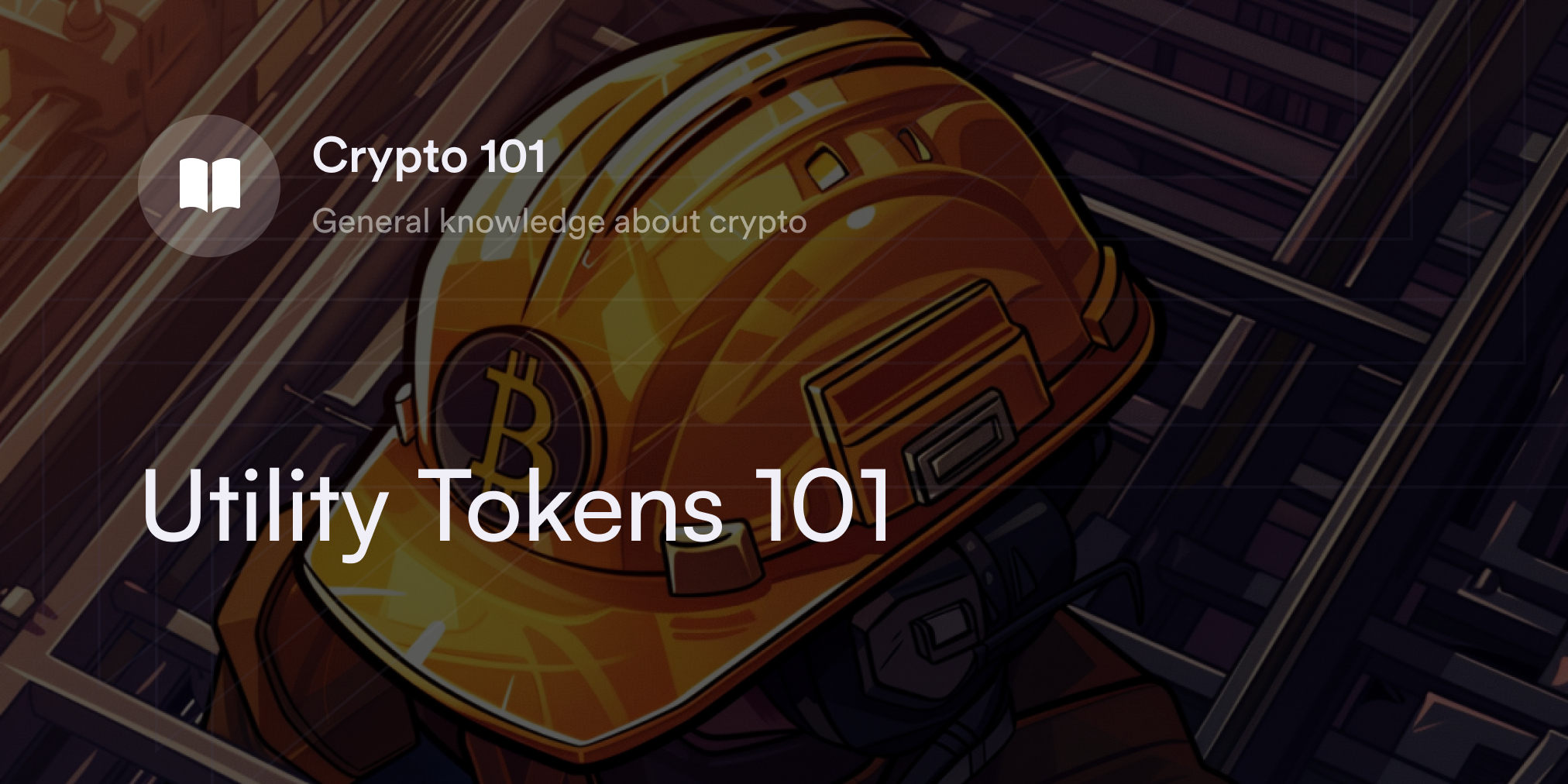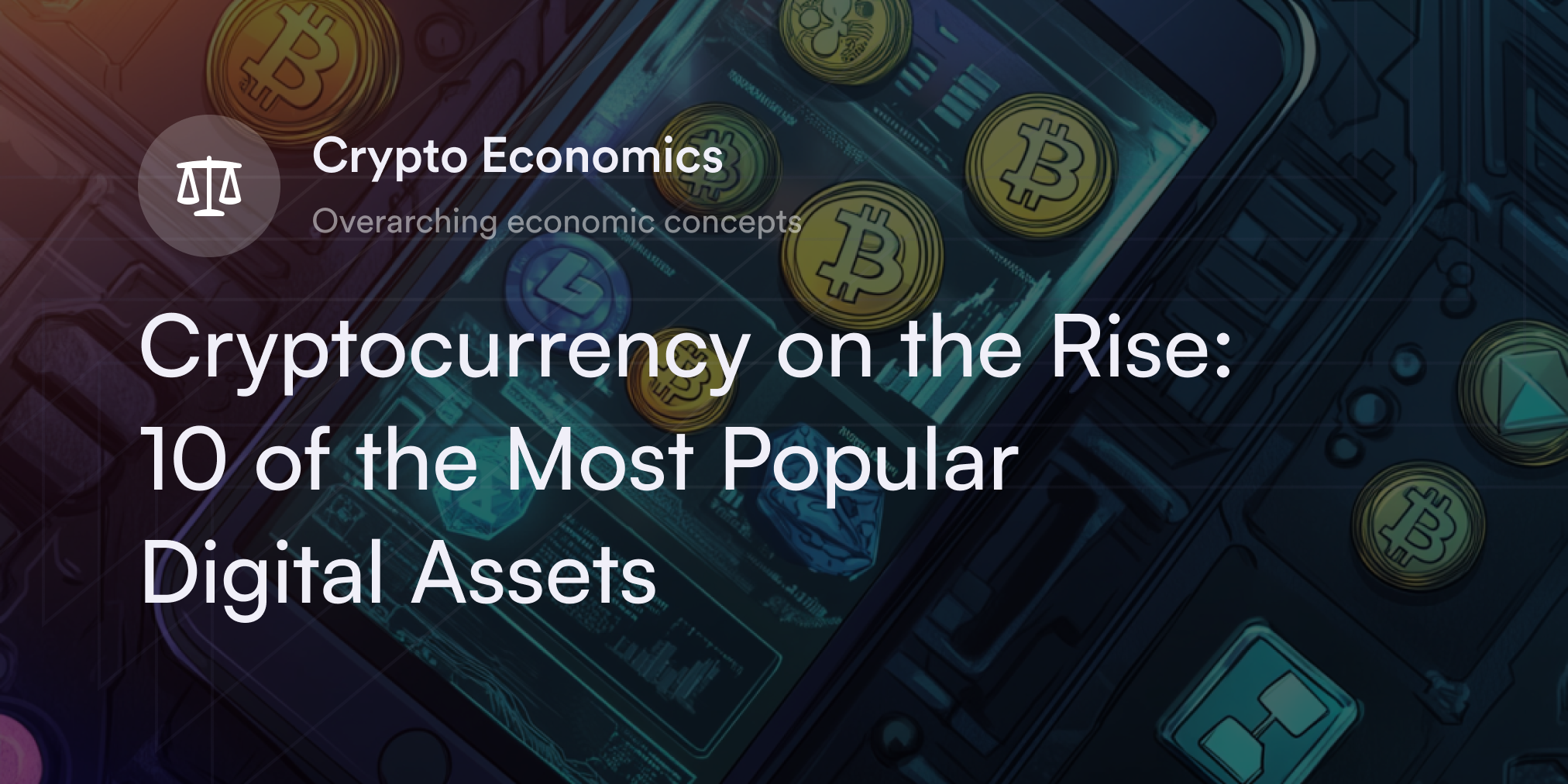


These days, all eyes are on the cryptocurrency ecosystem, attracting media houses and news forums for various reasons. And whenever financial news shows or publications focus on the cryptocurrency market, they often talk about the market price (or current trading price) for coins like Bitcoin (BTC) and Ethereum (ETH).
Although a cryptocurrency's market price is a crucial piece of info, traders need more data to fully grasp the mechanics of a digital asset's ecosystem. Many crypto traders leverage dozens of fundamental metrics to evaluate cryptocurrencies, with tokenomics being one of the most significant. The field of tokenomics provides traders with a clear view of the architecture of different digital assets, making it easier to choose the right cryptocurrencies for their portfolios.
Here’s all you need to know about what tokenomics is and how to use it to conduct thorough cryptocurrency research.
What is Tokenomics in Crypto?
Short for token economics, tokenomics is a research field focused on aspects of a cryptocurrency's monetary policy. Similar to how governments and central banks adjust the supply of fiat currencies, developers set the issuance and distribution of their digital assets. The difference between fiat currencies and crypto, however, is that the latter runs on decentralized computer networks called blockchains.
When developers decide on the economic policy for their crypto assets, they write this information into their cryptocurrency's code rather than release press reports, schedule meetings, or pass bills. Any feature in a cryptocurrency's design that impacts its supply and demand is key in tokenomics, including how many coins or tokens enter circulation daily, the average blockchain fees, and whether developers deliberately delete (aka burn) part of the cryptocurrency’s supply.
Tokenomics also includes components of a cryptocurrency's distribution, such as how much of a cryptocurrency early traders and team members hold versus the general public.
Why is Tokenomics Important?
Tokenomics provides traders with a detailed look into crucial aspects of a cryptocurrency's issuance and distribution, both of which impact a digital asset's price dynamics and potential for future growth. Traders often set aside time to review each cryptocurrency's tokenomics when researching and comparing the fundamentals of coins and tokens. This data helps users understand why different cryptocurrencies have their current market prices, giving traders concrete numbers to plug into their analyses when predicting a digital asset's future price.
Besides building a trading thesis on a cryptocurrency's market price, tokenomics give traders a better sense of a crypto project's sustainability. For example, even if a crypto coin has an attractive use case, tokenomic factors like an infinite supply and high inflation can make it more difficult for the coin to rise in value.
Key Features of Crypto Tokenomics
Tokenomics includes dozens of complex and interrelated features––all of which influence a cryptocurrency's market performance. Crypto traders often consider the following seven factors when analyzing different projects and deciding whether to buy or sell them:
1. Circulating, Total, and Maximum Supply
A cryptocurrency’s supply always explains "how much" of a coin or token there is, but there are three subcategories with slightly different details:
Circulating supply: A cryptocurrency's circulating supply lets traders know how many coins or tokens are available for trading on a given day. A circulating supply constantly fluctuates until it reaches the cryptocurrency's maximum limit.
Total supply: The total supply measures all the cryptocurrency on a blockchain minus any coins or tokens the project deliberately burned. Factoring in a blockchain's burning mechanisms gives traders a clearer view of coins or tokens available to the public.
Maximum supply: If a cryptocurrency has a maximum supply, there's a pre-coded limit on the number of coins or tokens on the blockchain. For instance, Bitcoin has a maximum supply of 21 million coins, meaning issuing more than 21 million coins on the BTC network is impossible.
2. Market Capitalization
Market capitalization measures the total market value in a specific cryptocurrency project or the crypto market as a whole. To determine a cryptocurrency's market price, traders divide the market cap by the cryptocurrency's circulating supply. For example, Bitcoin's circulating supply is 19.45 million, and if it has a market capitalization of $600 billion, one BTC’s price is $30,848.33 ($600 billion/19.45 million = $30,848.33).
Traders sometimes use hypothetical market caps to guess the possibility of a cryptocurrency hitting a target market price relative to its supply. For instance, meme coins like Shiba Inu (SHIB) and Pepe (PEPE) have maximum supplies in trillions, meaning they need a market cap well above Bitcoin's to hit a market price of $0.01. These facts help traders set reasonable expectations for a cryptocurrency's price performance.
Market cap valuations also show where most of the money in the crypto market is at any given moment. For example, the Bitcoin dominance score highlights the percentage of the crypto market cap currently in Bitcoin versus altcoins. Crypto price aggregator websites like CoinMarketCap and CoinGecko organize cryptocurrencies’ market cap in descending order, helping traders see the most popular digital assets daily.
3. Issuance Schedule
A cryptocurrency's issuance schedule means how many new coins or tokens enter the circulating supply each day. For instance, following the Ethereum blockchain's 2022 Merge upgrade, it releases approximately 1,700 ether coins daily. Learning a cryptocurrency's issuance helps traders estimate the average inflation percentage and analyze how the average supply changes impact price.
4. Crypto Distribution and Vesting Schedules
Some crypto projects set aside digital assets for project leaders, early traders, and financial partners before releasing coins or tokens to the public. Typically, the development team reveals how they plan to allocate their crypto funds in their white paper or roadmap for full transparency. Some cryptocurrencies also use vesting schedules to restrict when early crypto traders get to sell their holdings. For example, if a venture capitalist firm has a vesting schedule of one year, they can't sell any of their tokens until one year after they receive them in their crypto wallet. Traders examine a cryptocurrency’s distribution and vesting schedule when timing their trades because these features show the most prominent stakeholders with selling options.
5. Incentives Systems
Crypto projects need ways to encourage as many people as possible to process crypto transactions and enhance their network's security. Often, developers rely on an incentives structure with crypto rewards to entice more computers (aka nodes) to join their blockchain. In Bitcoin's proof-of-work (PoW) model, nodes contributing computing power to the blockchain can win free BTC every 10 minutes for solving advanced algorithms.
In contrast, blockchains using proof-of-stake (PoS) consensus algorithms make nodes lock the network's native cryptocurrency on-chain to get a chance to receive staking rewards. Determining a blockchain's incentives system provides more details on a project’s sustainability and changes to its circulating supply.
6. Network Fees
Also called gas fees, network fees are the costs people pay to send coins or tokens on a peer-to-peer (P2P) blockchain. Cryptocurrencies like Bitcoin and Ethereum often have dynamic fee schedules, which rise or fall depending on network activity. When there's a lot of congestion on a blockchain, gas fees typically go up to decrease demand and bring average transactions to more sustainable levels. A fee structure highlights both how a blockchain redistributes funds to compensate node operators and its ability to efficiently meet increased network demand.
7. Burning Mechanisms
Burning means deleting a cryptocurrency from existence by sending it to an inaccessible crypto wallet (aka a burn address). Some blockchains add burning mechanics to their tokenomics to increase scarcity for a cryptocurrency and manage inflation rates. For instance, Ethereum burns a portion of every crypto transaction on its blockchains. Although burning doesn't mean a cryptocurrency's value always increases, it adds deflationary pressure to the total supply of a coin or token.
How to Research a Cryptocurrency's Tokenomics
Cryptocurrency price aggregator websites like CoinGecko and CoinMarketCap offer tons of tokenomics-related data on thousands of digital assets. To find the circulating supply and market cap for different crypto projects, search for a cryptocurrency and view its page on one of these sites. Both websites provide links to each cryptocurrency's official white paper, which includes information from the development team on their project's goal, vision, and logistics.
A few websites also track key aspects of specific cryptocurrencies or valuable on-chain data to better inform a trader's perspective on tokenomics. For instance, firms like Glassnode and Messari publish reports with the latest info on significant transfers on blockchains like Bitcoin. Website Ultra Sound Money is another popular tool used in the Ethereum community to track ETH's tokenomics.
Dive Deeper Into Crypto Analysis with dYdX Academy
As essential as tokenomics is when researching cryptocurrencies, it's only one of many factors traders consider when analyzing digital assets. For more pro tips on fundamental and technical analysis, check out dYdX Academy for in-depth guides on crypto trading.
Feeling ready to enter the crypto market? dYdX offers eligible traders a convenient, low-fee decentralized trading platform for crypto perpetuals. For more details on dYdX's features, follow our official blog for the latest news and updates, and eligible traders can start trading on dYdX today.
Disclaimer
The content of this article (the “Article”) is provided for general informational purposes only. Reference to any specific strategy, technique, product, service, or entity does not constitute an endorsement or recommendation by dYdX Trading Inc., or any affiliate, agent, or representative thereof (“dYdX”). Use of strategies, techniques, products or services referenced in this Article may involve material risks, including the risk of financial losses arising from the volatility, operational loss, or nonconsensual liquidation of digital assets. The content of this Article does not constitute, and should not be considered, construed, or relied upon as, financial advice, legal advice, tax advice, investment advice, or advice of any other nature; and the content of this Article is not an offer, solicitation or call to action to make any investment, or purchase any crypto asset, of any kind. dYdX makes no representation, assurance or guarantee as to the accuracy, completeness, timeliness, suitability, or validity of any information in this Article or any third-party website that may be linked to it. You are solely responsible for conducting independent research, performing due diligence, and/or seeking advice from a professional advisor prior to taking any financial, tax, legal, or investment action.
You may only use the dYdX Services in compliance with the dYdX Terms of Use available here, including the geographic restrictions therein.
Any applicable sponsorship in connection with this Article will be disclosed, and any reference to a sponsor in this Article is for disclosure purposes, or informational in nature, and in any event is not a call to action to make an investment, acquire a service or product, or purchase crypto assets. This Article does not offer the purchase or sale of any financial instruments or related services.
By accessing this Article and taking any action in connection with the information contained in this Article, you agree that dYdX is not responsible, directly or indirectly, for any errors, omissions, or delays related to this Article, or any damage, injury, or loss incurred in connection with use of or reliance on the content of this Article, including any specific strategy, technique, product, service, or entity that may be referenced in the Article.







